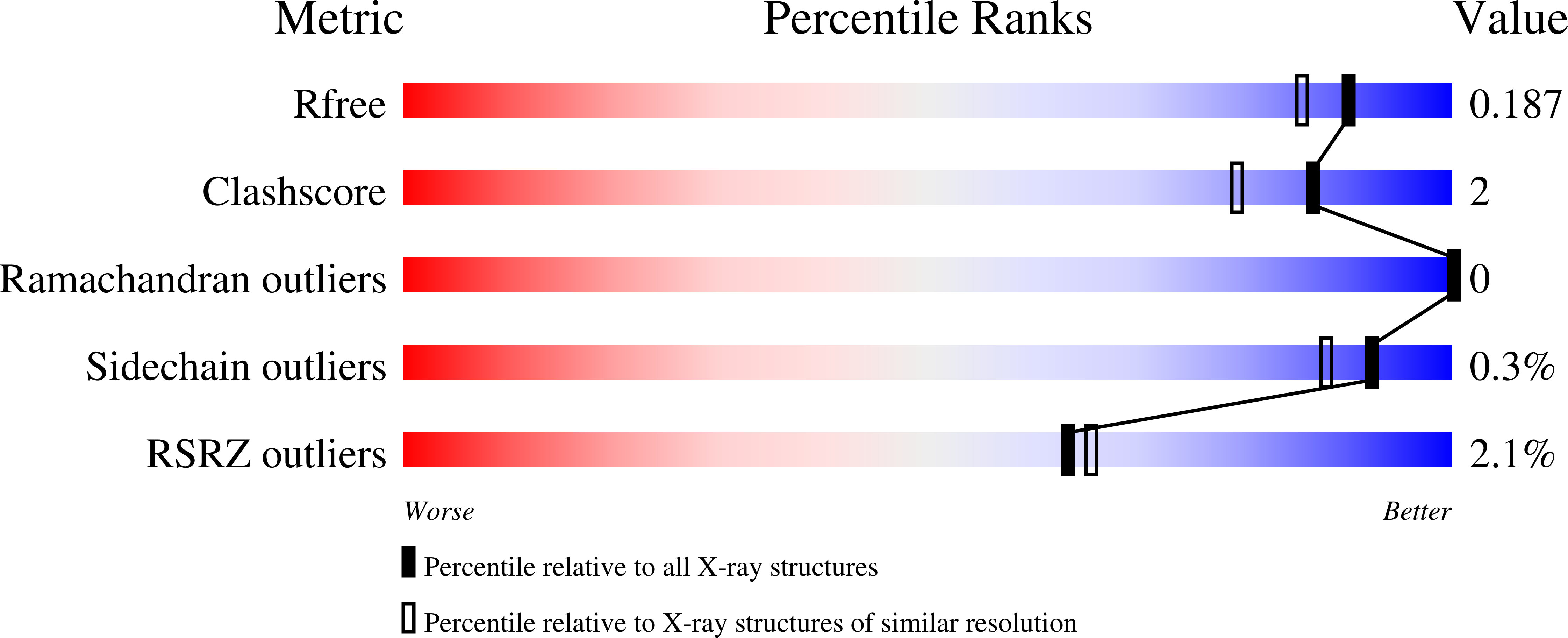Active Site Plasticity within the Glycoside Hydrolase NagZ Underlies a Dynamic Mechanism of Substrate Distortion.
Bacik, J.P., Whitworth, G.E., Stubbs, K.A., Vocadlo, D.J., Mark, B.L.(2012) Chem Biol 19: 1471-1482
- PubMed: 23177201
- DOI: https://doi.org/10.1016/j.chembiol.2012.09.016
- Primary Citation of Related Structures:
4GVF, 4GVG, 4GVH, 4GVI, 4GYJ, 4GYK - PubMed Abstract:
NagZ is a glycoside hydrolase that participates in peptidoglycan (PG) recycling by removing β-N-acetylglucosamine from PG fragments that are excised from the bacterial cell wall during growth. Notably, the products formed by NagZ, 1,6-anhydroMurNAc-peptides, activate β-lactam resistance in many Gram-negative bacteria, making this enzyme of interest as a potential therapeutic target. Crystal structure determinations of NagZ from Salmonella typhimurium and Bacillus subtilis in complex with natural substrate, trapped as a glycosyl-enzyme intermediate, and bound to product, define the reaction coordinate of the NagZ family of enzymes. The structures, combined with kinetic studies, reveal an uncommon degree of structural plasticity within the active site of a glycoside hydrolase, and unveil how NagZ drives substrate distortion using a highly mobile loop that contains a conserved histidine that has been proposed as the general acid/base.
Organizational Affiliation:
Department of Microbiology, University of Manitoba, Winnipeg, MB R3T 2N2, Canada.
















